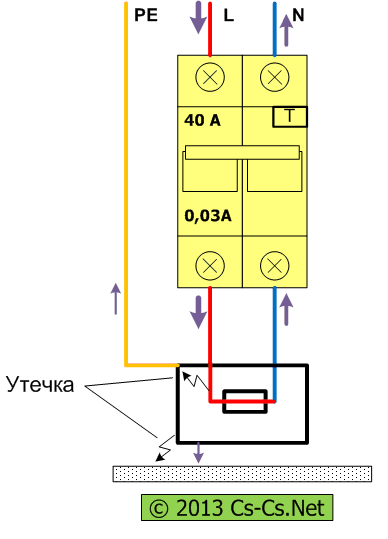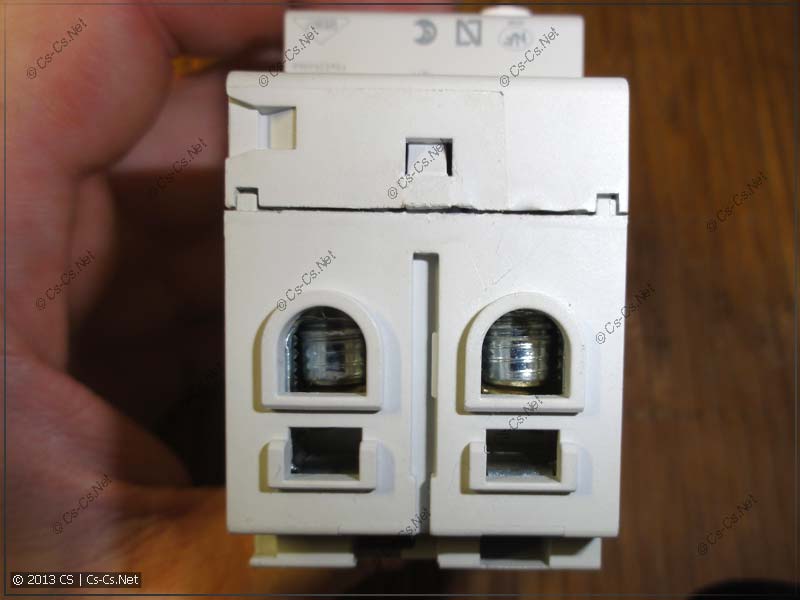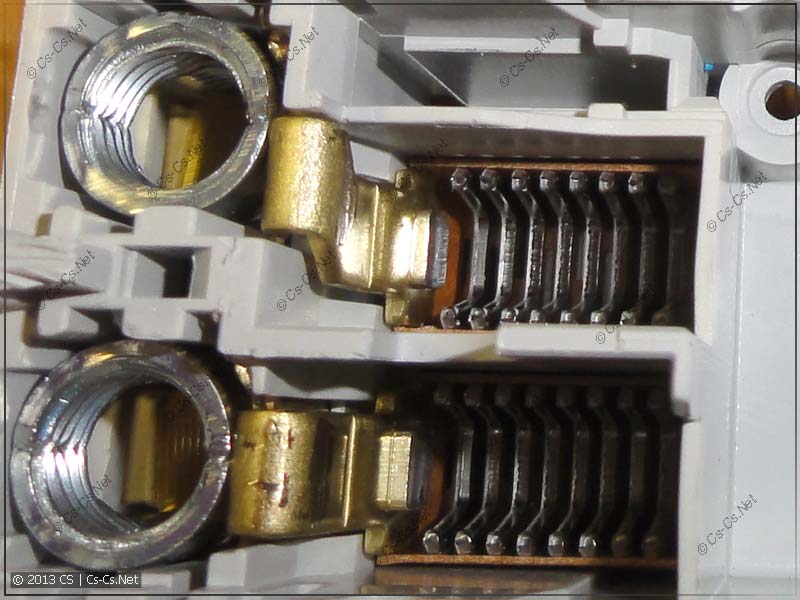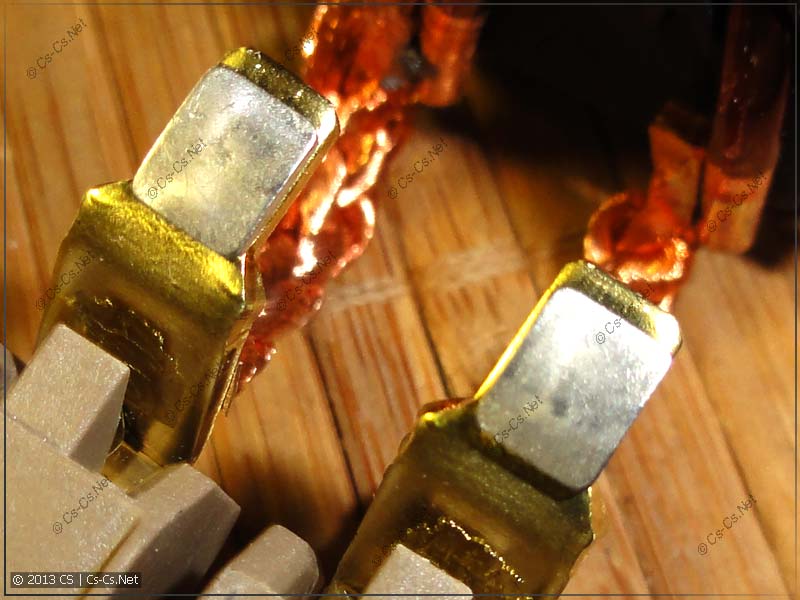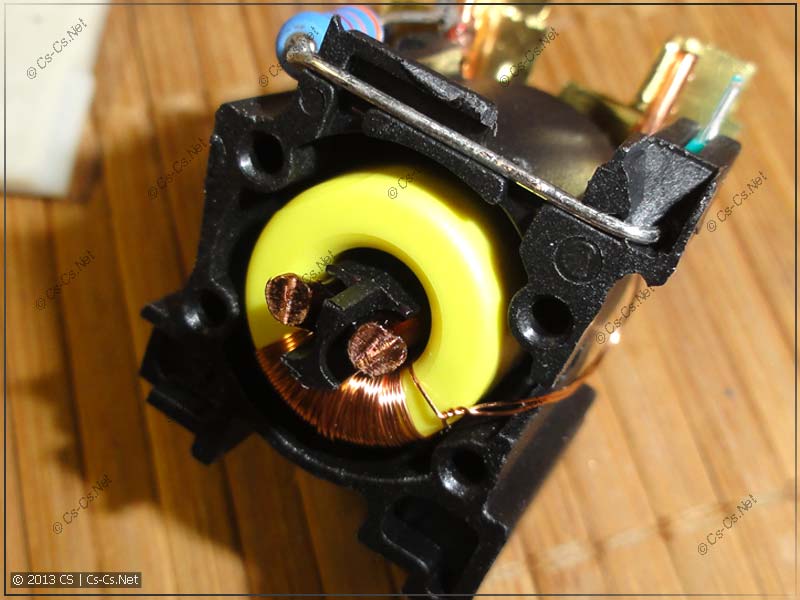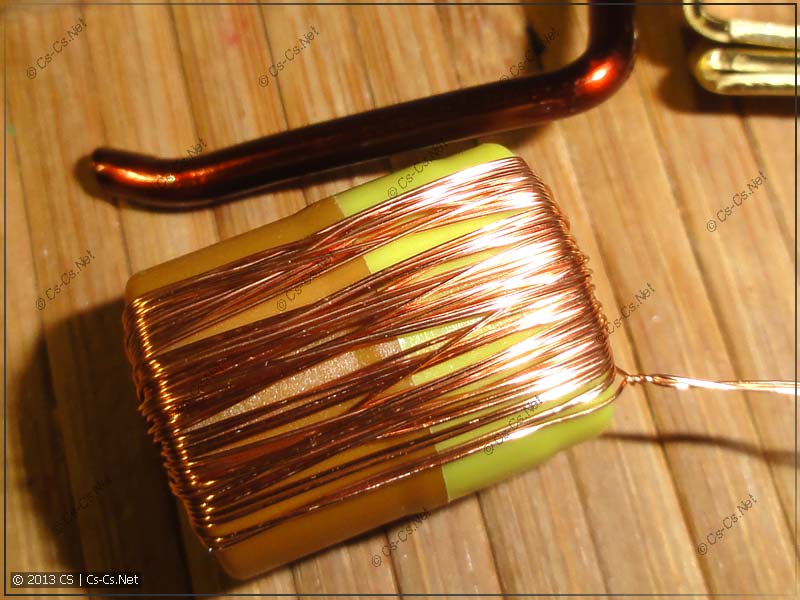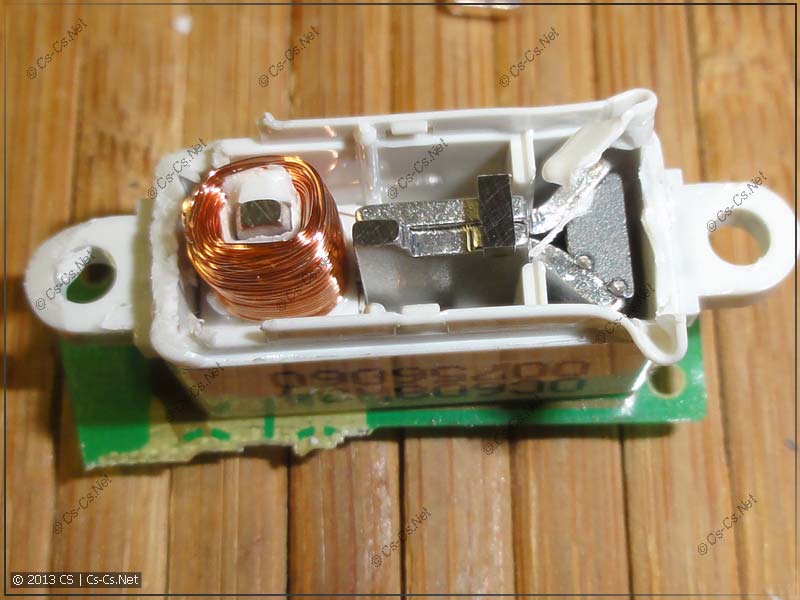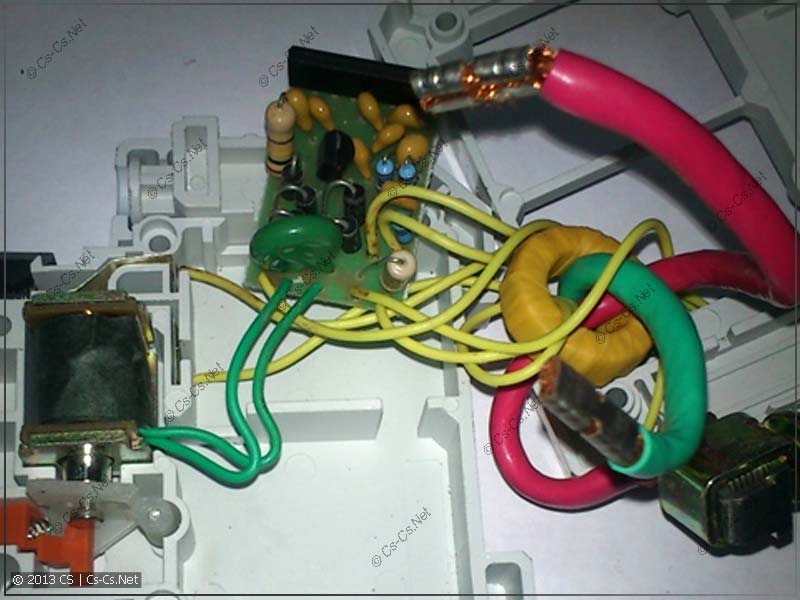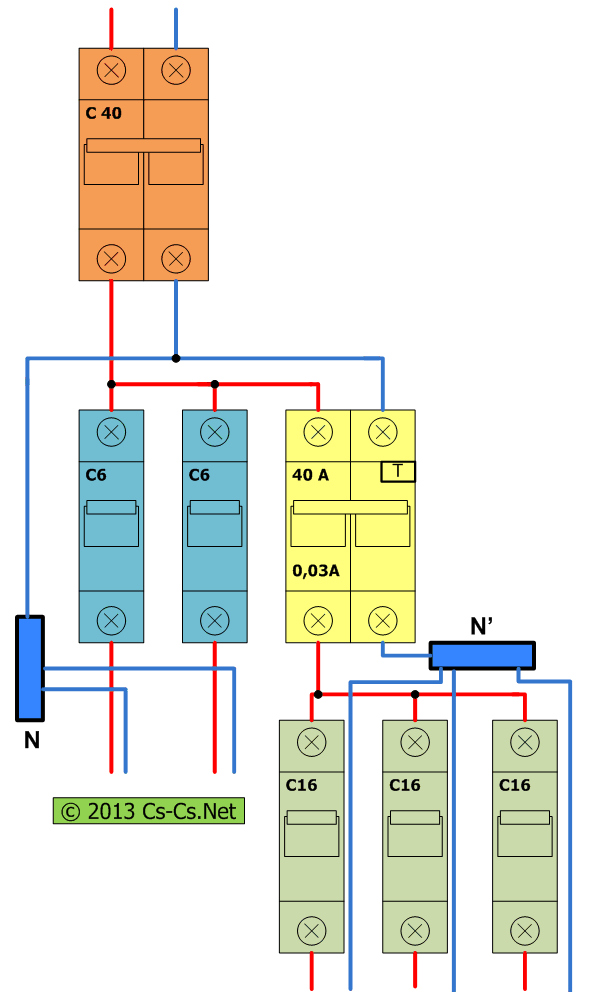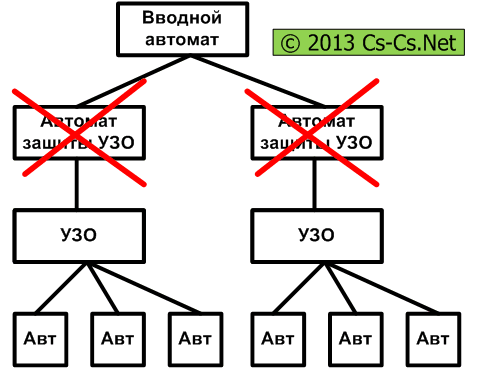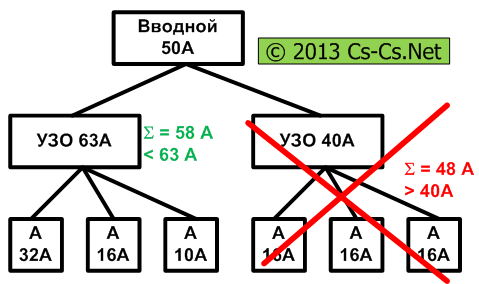Sections of the site
Editor's Choice:
- How to unlock ariston washing machine
- Pros and cons of LED lighting
- Pulse relay: device and connection
- How to calculate the illumination of a room with LED lamps?
- Plastic box - do-it-yourself aesthetic view of electrical wiring
- Electricity consumption of a warm floor: electric and film
- Installing a pump in a well: how to properly install pumping equipment
- Electrician Toolkit Overview
- How to choose a water heater: the most complete list of evaluation criteria
- 1 acoustics on the example of Sven SPS-860 and Realtek ALC889 codec
Advertising
| UZO: What is it and why is it necessary? / Review with photos |
|
I promised to roll up a post for a long time, but because of the creative crisis, it was a little delayed =) And I was too lazy to draw diagrams, but now they somehow drew themselves. And today we are talking about RCD! =) And at least in order to dispel the terrible obscurantism, which began to be born on the Web on forums in the context of “and I heard somewhere that uuuuu ..” - “yes-yes-yes, probably yyyy” and so on. RCD has become mandatory for use in our country as early as 12 years ago (since 2001), but right now, for most electricians (especially ZhEKovsky), RCD is some kind of mythical device that seems to need to be installed, and which sometimes for some reason something knocks out and probably broken? Will have to figure it out. Let's start with the simplest: what for is it needed? And first of all, to protect a person from electric shock and, accordingly, from death. It is known that a person dies at a current of about 80 mA (0.08 A), and a current of about 50 mA (0.05 A) is considered to be a non-release current (when a person cannot tear himself away from the wire on his own). A conventional machine protects the line only from overcurrent (short circuit or heavy load), and even with a current of 1..2 amperes, it should not work. Therefore, in this variant (when there is only a machine gun on the line from the defense), we can quite calmly get a charred carcass of a person and an unplugged machine gun. OK! What can we do? First you need to analyze a little what is happening in general. The following usually happens. If a person simply put two fingers into a socket, nothing can help him, this is evolution ("Technological progress has made sockets inaccessible to most children - the most gifted die" ©). But if he touched a kettle or a washing machine in which the heating element was leaking, and because of this, dangerous voltage appeared on its case, then a dangerous current would flow from the device case through the human body. For example, on a wet floor. Get hurt. Great! And if we come up with some kind of additional conductor that will imitate a person who has fallen under the influence of a current? And pre-connect it to the case? And in case of danger, all the current will go through it? So that's exactly what they came up with! This is the well-known "grounding" or, to put it correctly, a protective conductor - PE, P rotation E arth. And here we immediately need to talk about terminology. Unfortunately, the terminology is also a complete ass! Because before 2001 there were no such devices in our country at all] And the word " differential"we, his mother, is usually used to refer to a differential automaton - a contraption that contains a conventional automaton and an RCD! Moreover, the same difavtomat is also called " Differential circuit breaker«. How's the confusion? So, it turns out: Automatic, Automatic switch is a common device that provides line protection against overcurrent in it. More generally, it can be said that overcurrent protection; Differential switch, Residual current switch, RCD is a device that protects a person from electric shock. In general terms, this type of protection can be called either "differential protection", or "protection against leakage currents" or "protection against current leakages". A differential circuit breaker, Dif, Difavtomat is a device that contains the properties of a conventional automaton and an RCD that provides protection for ONE line from overcurrents and leakage currents. Therefore, if you see some strange inconsistencies or abbreviations like “Off. Dif" or "Aut Diff off" - be sure to Clarify what is meant there! Now let's touch on the topic of PE-explorer. Protective conductor should correctly be called "Protective conductor", PE-conductor, PE! Do not use the words "grounding" and the like, because they do not quite correctly indicate what you want to say! I translate into the correct language. Only depending on the specific power supply system (TT, TN-C-S), the protective conductor will be either neutral, or clean ground, or even re-ground =) Therefore, if you are trying to say something in a general way (“Do you have a floor shield with grounding?”) - say “Is there PE in the floor shield?”. If we are talking about some kind of input device, say exactly what is there: “You need to re-ground zero using a ground loop.” The problem of incorrect terminology is also that when it comes to grounding in an apartment building, then some unique ones begin to produce different ideas “Oops! I’m going to stuff some pins into the ground, drag the cable to the 9th floor, and I’ll have a fucking ground!”. In fact, it turns out that then either the whole house begins to feed through this grounding, or a dangerous potential is transferred to it in the event of an accident. And because of this, people are dying again. Now let's get back to how this very RCD works. So we came to the conclusion that the RCD protects a person from a damaged device, on the body of which there is a dangerous potential. It works like this:
The phase and zero of the power supply pass through the RCD. The RCD controls the current strength at the "input" and at the "output". If the current leaves as much as entered the RCD, there will be no trip. But if SUDDENLY the current found some other path, and part of it began to leak to another place (that's where the term "leakage" comes from), then the RCD will immediately cut off the line. In my drawing, this is shown by thick and thin arrows. Once again, I draw your attention to the fact that the RCD will NOT protect against if you take the phase and zero! Then a person (moron) for this RCD will be a normal load, and he will die anyway. However, RCD will protect:
RCD MUST be installed! Do not listen to those who say that "yes it will knock you out"! This means that they most likely do not understand why it knocks out what to do and (or) do not want to fix their jambs! If your wiring is budget (and a shield in the heels of machines) - you only need one RCD for the entire apartment. If you have a complex shield, you can put several RCDs in different zones or types of rooms. However, I remind you: the RCD does not have overcurrent protection !! This is a device that protects a person from electric shock! Therefore, in the circuit where this RCD is located, there must also be an automatic machine! RCDs have three parameters by which they can be selected:
Let's take the RCD ABB F202 AC-40 / 0.03 and disassemble it! I came across a fully working copy, but with a marriage: its flag did not change color to green when this RCD was turned off.
I remind you that ABB RCDs have double clamps. This is what allows you to simultaneously connect two wires of zeros under one RCD without an additional zero busbar. And we'll talk about that later too.
We open the RCD and see what is there:
In front we see the mechanical part, and behind - a scarf with details. Some might think that this is an electronic RCD, but it is not. There are a pair of diodes on the scarf (for rectifying alternating current from a differential transformer) and filtering capacitors, apparently to protect against false positives. In the photo below, you can also see the power lever of the "Test" button. This button simulates a leakage current, and when pressed, the RCD should trip. If the RCD does not work, then it is either defective or dead. In my shields, I check all UZOs in this way.
In these RCDs, the TEST button is only energized when the RCD is on. Inside the UZOshka there is an arc quenching chamber:
But the fixed contacts of the RCD are made of electrical brass.
There are silver solderings on the moving contacts:
Now let's look at the differential transformer - the basis of the basics of the RCD. It is he who "measures" the currents flowing through the RCD. In RCD data, it is made in the form of a solid block:
Inside the transformer, the main supply wires are rigidly fixed in special channels. I liked the build quality of the transformer. The photo below also shows a resistor to create an artificial leakage current.
And here is the secondary winding of the transformer. The number of its turns determines the amount of leakage current at which the RCD will trip.
RCD works like this. If a current of the same magnitude flows in and out through the RCD, then the magnetic fluxes from both conductors, in which the current flows in different directions at one time, are balanced, and no current occurs in the secondary winding of the transformer. If the currents flowing in and flowing out through the RCD are different, then a current will appear on the secondary winding of the transformer. It straightens and is fed to an electromagnet, which turns off the RCD.
Here is such a mockery happened over UZOshka:
And here is a photo of the TDM electronic RCD from the MasterCity.ru forum:
It seems to me that there is no need to explain the difference here? We see an amplifier on a microcircuit (in the distance), filtering capacitances, and a transistor, which, apparently, switches the power of the electromagnet. Well, now we begin the practical part, in which, in fact, there are even more nuances than in the theoretical one! RCD connectionIn fact, there are two important nuances: 1. RCD MUST be protected at its face value! That is, in the circuit where the RCD is located, there must be a fuse or a circuit breaker that will protect the RCD. Some understand this literally, and begin to put a personal machine right in front of the RCD, and also a two-pole one. Because of this, strange discussions in the forums, muddy shield schemes and other oddities begin. 2. Phase and Zero that have passed through the RCD should not be "mixed" with other phases and zeros. That is, if, according to the shield scheme, you took the phase after one specific RCD, then you should also take zero after this particular RCD. If you make a mistake, then the RCD will turn off, and you will puzzle over what it was =) Let's see a diagram of some shield:
What do we have here? Here I simply drew a simple shield: two machines for the light and three machines for sockets. We have an introductory machine at 40A. Our light is made without RCD, and all sockets are under RCD. Pay attention to how the lines are grouped, and to the layout of the zeros. Since our light is connected to the RCD, then we take zero to the light to the RCD, using a zero bus for this N. Zero on the sockets that are connected after the RCD is also taken after the RCD and from the tavern N'. Is everything simple? In fact, yes, but the debate continues on the forums about circuit breakers TO RCDs. So let's take a look at this chart:
And let's see my correspondence with ABB: . It clearly says that if the sum of the ratings of the machines after the RCD does not exceed its rating, then the RCD is protected and no additional machines are needed. UPDATE 2014.02: ATTENTION!!! This information is only valid for ABB RCDs, because I dug it in catalogs and dug it out to technical specialists. What was found out. In fact, there are two RCD protections: overload and short circuit. For overload, the nominal value of the machine must be 100% no more than the nominal value of the RCD. According to k.z. we can protect ourselves with automatic machines and fuses with a large rating. The RCD shows the level of protection when using a 100 A fuse because there is such a standard test. But we will not take a separate machine and a separate fuse. Therefore, we simply defend ourselves with a machine gun with a small denomination. The relative position of the machine and the RCD and the total number of machines is not important. The main thing is that the total rating of the machine (if it is on top) and the machines (if they are on the bottom) should not exceed the rated current of the RCD. As with other manufacturers - I don’t know, so before stupidly copying the scheme shown above and still proving to everyone “But CS drew here, and you are all fools” - read the damn technical catalog of the manufacturer !! How to choose the right RCD according to the contact current rating? The rules can be described, in relation to our shields, as follows:
I drew pictures. On the first we have two RCDs for 40 and 25A. At the same time, the nominal value of the introductory machine is 40A. The first RCD has a rating of 40A, and is protected by an introductory machine. Therefore, after it, you can cram anything and as much as you like. Under it, automatic machines stick out with the sum of denominations as much as 58A. The second RCD has a rating of 25A (for example), and therefore we can protect it only by putting automatons after it for no more than 25A (6 + 6 + 10A = 22).
Let's look at the second diagram. Here we have an introductory machine for 50A (as in new buildings with a single-phase input). Since we had machines worth 58A under the first RCD at 40A, the RCD at 40A will not work in any way. What to do? let's raise the rating of this RCD to 63A - and everything will get better. But at the second RCD, I showed an example of how not to do it. We have a second RCD at 40A, and the machines under it are at 48A. Here it is not protected and it is not necessary to do so!
How to invent shields for RCD? RCDs in shields are more convenient to use in the case of a single-phase power supply. Then the whole shield turns into a tree structure, as in the pictures above: an RCD, under which there are several automata. This is the easiest and most budget option. And it’s easier to assemble the shield if all the RCDs can be put in a row and connected with a special shank-comb (I). The budget of this option is that some RCD of type A at 10 mA is cheaper than a difavtomat of the corresponding rating, and even with category B. However, there is also an inconvenience. If a leak occurs on one of the lines under the RCD, the RCD will cut off all these lines at once. This will be somewhat inconvenient, as you understand, especially if it will be difficult to immediately find the place of the leak. In some cases, you even have to disconnect the zeros from the bus to find the problem line, or use two-pole automata (in relation to ABB) or 1P + N automata (other manufacturers have them in the form of a single module). However, we remember that if there are too many lines under one RCD, then the RCD can falsely trip from the natural leakage current through the cable insulation and power filters. Therefore, usually an ideal RCD shield contains several RCDs, grouped by type of room or type of load. This allows you to turn off the lines for leaks in small sections, without turning off everything at once. And now a few more words about what to do if there is no PE, and how to check the RCD in general. If PE is not, then you still need to install an RCD! Do not listen to those who say "it will not work without grounding." Firstly, remind them of the correct name for PE, and secondly, the RCD will work, but in fact. If in a circuit with PE the leakage current has where to go (in PE), then without PE the leakage current has only one way: through the touched person. What will happen? If the leakage current is so small that the RCD will not work, you will simply be shocked. If the leakage current is large, then you will be pulled, but the RCD will immediately work, disconnecting the line and reducing the time of the dangerous current on you. I remind you that in this case, all lines still need to be laid with PE, just do not connect PE anywhere until the reconstruction of the power supply system. RCD can be checked like this: a) Press the "Test" button. If the RCD is turned off, then everything is fine with him. Somehow, unexpectedly, he told everything about everything. I thought it would be long and tedious, but it turned out simply and clearly. Anything I forgot to say, ask in the comments! If you are interested in the information from this post and you want to contact me (or order / ), then write to me by mail or call +7-926-286-97-35
. I respond to the name "Electroshaman". |
New
- Kievan Rus: education and history
- What vitamins are good for facial skin?
- Rudbeckia is spinous. Rudbeckia is a perennial. flower planting technology
- Secrets of losing weight by Ksenia Borodina What pills did Ksenia Borodina take for weight loss
- Kuriles: history with geography History of the disputed Kuril Islands
- Beer styles: porter and stout, lager and ale
- The optimal temperature for each stage of the distillation of moonshine and mash
- Rye malt and what can be done with it?
- How to make fortified wine at home
- How to make wine yeast at home, instructions for use

